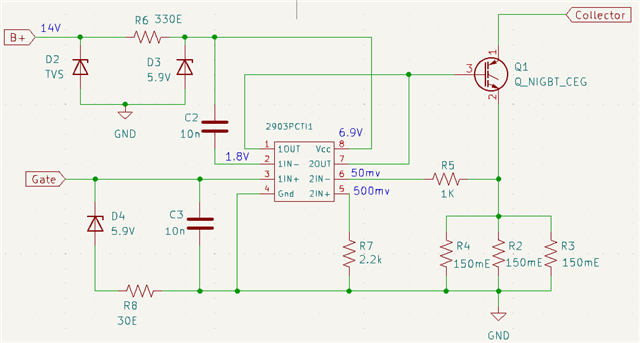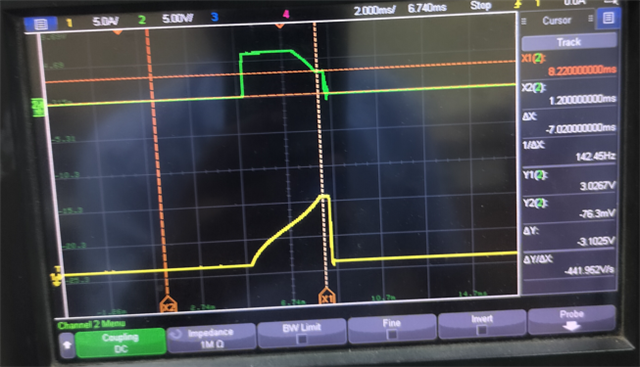Other Parts Discussed in Thread: LM239
Tool/software:
Hi everyone,


I recently bench marked a schematic used in a car ignition coil driver.
-
B+ → battery supply
-
Gate → input pulse from ECU
-
Collector → connected to ignition coil
The circuit works fine in the car, but I’m trying to fully understand how it operates.
The controller IC has the body marking “2903_PCTI1.” Since it mentions 2903, I assumed it might be similar to an LM2903 dual comparator. However, I’m not certain if it really is a comparator, or how exactly it’s being configured in this circuit.
Here’s what I observed during testing:
-
Under normal operation, the output signal follows the ECU’s gate signal, but the amplitude is limited to ~6 V.
-
Once the ignition coil current (collector–emitter) reaches around 10 A, measured through a shunt resistor, the output amplitude gets clamped to ~3.3 V (waveform attached). CH2-Gate I/P to IGBT, CH1-Collector Current
-
I’m not sure how the circuit is implementing this amplitude limiting/clamping function.
If anyone can help me understand how this configuration works, it would really help me design a more optimized version for the same application.

